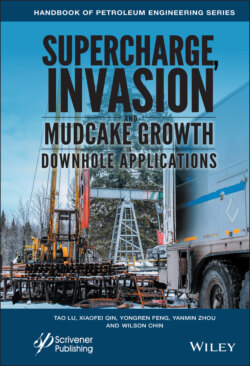Читать книгу Supercharge, Invasion, and Mudcake Growth in Downhole Applications - Группа авторов - Страница 17
1.2.3 Enhancing and enabling technologies.
ОглавлениеWhile we principally focus on pressure transient analysis in this volume, a number of enabling technologies contribute to the operational success of formation testers in general, and in particular the robustness of the tools mentioned in Sections 1.2.1 and 1.2.2. A critical problem is that associated with “stuck tools,” which results in expensive fishing jobs, lost tools and increased rig costs.
Stuck tool alleviation. Issues related to stuck pipe are as old as drilling itself. In “Development on Incongruous Pushing and Stuck Releasing Device of EFDT,” by Qin, X., Feng, Y., Song, W., Chu, X. and Wang, L. and appearing in Journal of China Offshore Oilfield Technology, Vol. 4, No. 1, April 2016, pp. 70-74, the authors analyze the causes of differential pressure sticking during openhole wireline logging. Their modular IPSRD releasing device, designed for EFDT formation tester applications, could be seamlessly assembled to the tool. “Stuck Release Arms” (SRA) are driven by hydraulic forces that free the dual probe tool from adhesive forces. In Chapters 4 and 5, we show how mudcake thicknesses can be accurately modeled and predicted – small values to reduce chances for tool loss are needed, while larger thicknesses are required to seal tester pads to the sandface – at the same time, providing excellent descriptions for supercharge pressure effects.
The authors importantly point out that while measuring pressure and sampling, even at a single point in the well, duration times may last several hours or even tens of hours. In particular, for higher mud densities, the possibility of differential sticking – and the likelihood of expensive fishing jobs – is high. In extreme cases, loss of the tool downhole and well abandonment are possible. Figure 1.18 explains the conceptual ideas behind IPSRD. The left diagram illustrates the differential sticking process, with the following nomenclature: 1-Wellbore fluid, 2-Backup, 3-EFDT, 4-Mudcake, 5-Probe, 6-Protector and 7-Formation. The right side outlines the tool architecture. Upper Stuck and Lower Stuck release modules USRM and LSRM are found at the top and bottom, with the Dual Probe Module (DPM) residing between the two. The “stuck release arms” (SRA) for each releasing module are designed in opposite directions for pushing separately. The paper describes several field applications and savings in logging costs.
Figure 1.18. IPSRD stuck tool release mechanism.
Field facilities. Finally, we offer some snapshots of COSL logging trucks and rigsite facilities from which formation testing jobs are run. The photographs are self-explanatory.
Figure 1.19. Rigsite facilities.
